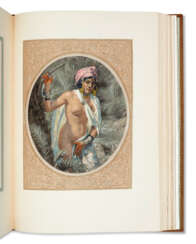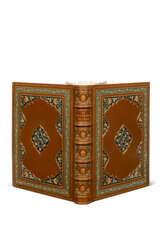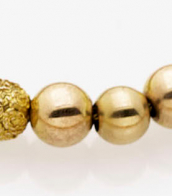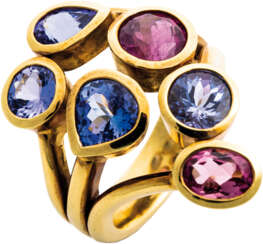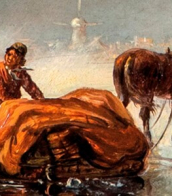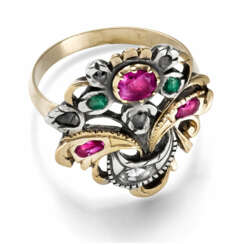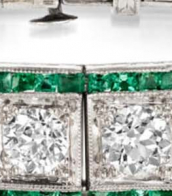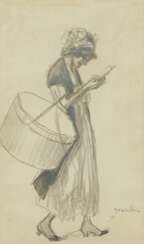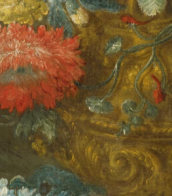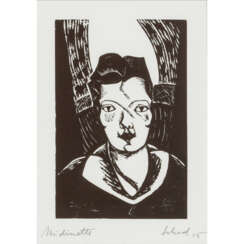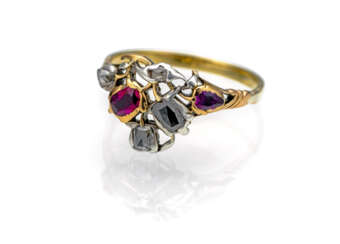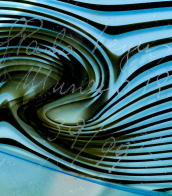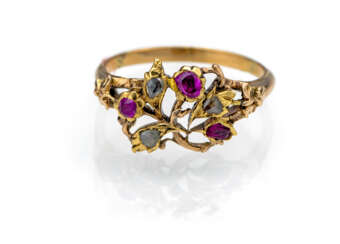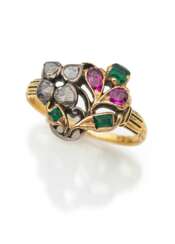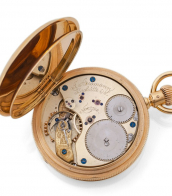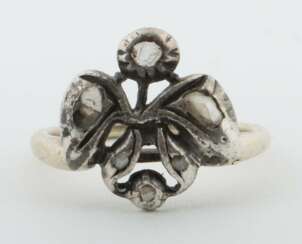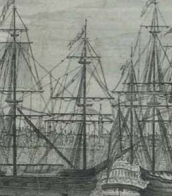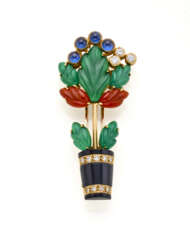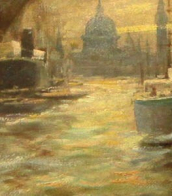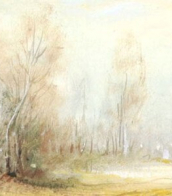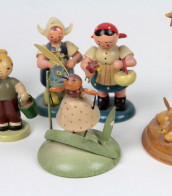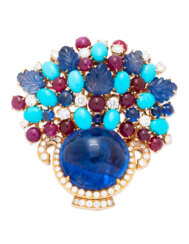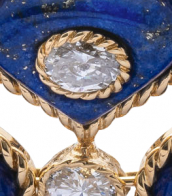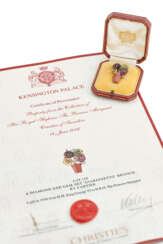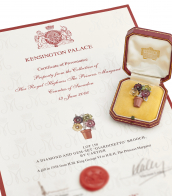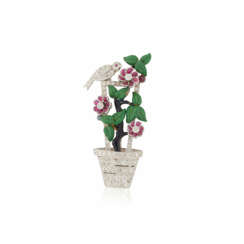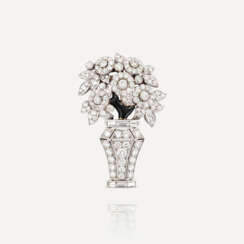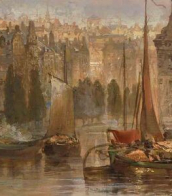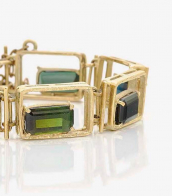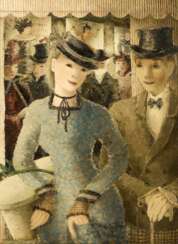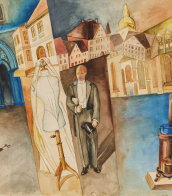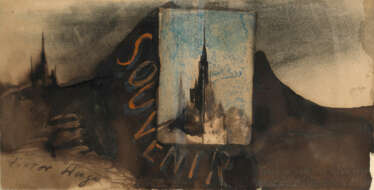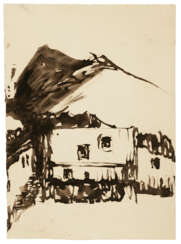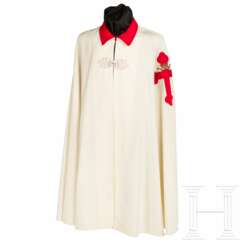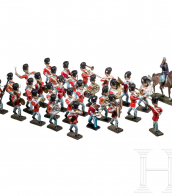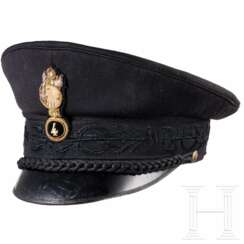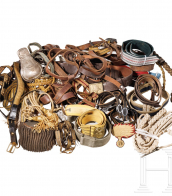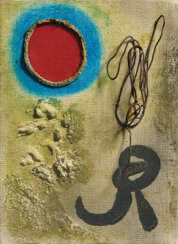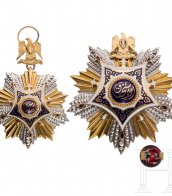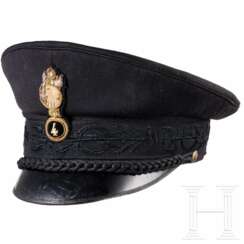dinet
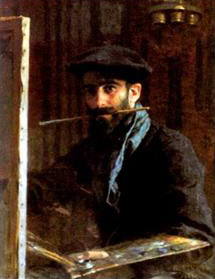
Nasreddine Dinet, originally known as Alphonse-Étienne Dinet, was a French Orientalist painter, renowned for his depictions of North African culture. He won a silver medal for painting at the Exposition Universelle in 1889 and founded the Société Nationale des Beaux-Arts along with notable artists like Meissonier and Rodin. Dinet's enchantment with North Africa led him to convert to Islam and change his name, reflecting his deep engagement with Arab culture and language, which set him apart from his contemporaries. His works, characterized as conservative and ethnographic, capture the nuances of local culture, from genre scenes to religious subjects. A prolific artist, Dinet also translated Arabic literature into French, contributing to cultural exchange.
His works are held in high regard, with examples like "The Snake Charmer" showing his technical prowess and cultural immersion. This painting and others are exhibited in prominent institutions such as the Art Gallery of New South Wales and the Musée d'Orsay. Dinet's understanding of Arab culture allowed him to portray women in spontaneous and dynamic ways, often employing a vivid color palette reminiscent of Fauvism. His legacy is preserved in the Nasreddine-Dinet Museum in Bou-Saâda and nearly 270 of his drawings are housed in the Louvre's Department of Graphic Arts.
Art collectors and experts recognize the significance of Dinet's work in bridging cultures through art. His contribution to Orientalist art provides a window into the traditions and stories of North African societies. For those interested in Dinet's work, private collections and auctions offer opportunities to acquire his art, with sales history indicating active interest in pieces like "Femmes arabes au cimetière."
For updates on new product sales and auction events related to Nasreddine Dinet, sign up for our newsletter. Stay informed on the latest opportunities to acquire works by this esteemed artist without superfluous flair, just the essential information for collectors and connoisseurs.


Nasreddine Dinet, originally known as Alphonse-Étienne Dinet, was a French Orientalist painter, renowned for his depictions of North African culture. He won a silver medal for painting at the Exposition Universelle in 1889 and founded the Société Nationale des Beaux-Arts along with notable artists like Meissonier and Rodin. Dinet's enchantment with North Africa led him to convert to Islam and change his name, reflecting his deep engagement with Arab culture and language, which set him apart from his contemporaries. His works, characterized as conservative and ethnographic, capture the nuances of local culture, from genre scenes to religious subjects. A prolific artist, Dinet also translated Arabic literature into French, contributing to cultural exchange.
His works are held in high regard, with examples like "The Snake Charmer" showing his technical prowess and cultural immersion. This painting and others are exhibited in prominent institutions such as the Art Gallery of New South Wales and the Musée d'Orsay. Dinet's understanding of Arab culture allowed him to portray women in spontaneous and dynamic ways, often employing a vivid color palette reminiscent of Fauvism. His legacy is preserved in the Nasreddine-Dinet Museum in Bou-Saâda and nearly 270 of his drawings are housed in the Louvre's Department of Graphic Arts.
Art collectors and experts recognize the significance of Dinet's work in bridging cultures through art. His contribution to Orientalist art provides a window into the traditions and stories of North African societies. For those interested in Dinet's work, private collections and auctions offer opportunities to acquire his art, with sales history indicating active interest in pieces like "Femmes arabes au cimetière."
For updates on new product sales and auction events related to Nasreddine Dinet, sign up for our newsletter. Stay informed on the latest opportunities to acquire works by this esteemed artist without superfluous flair, just the essential information for collectors and connoisseurs.
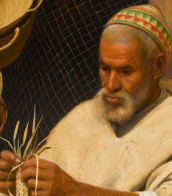

Nasreddine Dinet, originally known as Alphonse-Étienne Dinet, was a French Orientalist painter, renowned for his depictions of North African culture. He won a silver medal for painting at the Exposition Universelle in 1889 and founded the Société Nationale des Beaux-Arts along with notable artists like Meissonier and Rodin. Dinet's enchantment with North Africa led him to convert to Islam and change his name, reflecting his deep engagement with Arab culture and language, which set him apart from his contemporaries. His works, characterized as conservative and ethnographic, capture the nuances of local culture, from genre scenes to religious subjects. A prolific artist, Dinet also translated Arabic literature into French, contributing to cultural exchange.
His works are held in high regard, with examples like "The Snake Charmer" showing his technical prowess and cultural immersion. This painting and others are exhibited in prominent institutions such as the Art Gallery of New South Wales and the Musée d'Orsay. Dinet's understanding of Arab culture allowed him to portray women in spontaneous and dynamic ways, often employing a vivid color palette reminiscent of Fauvism. His legacy is preserved in the Nasreddine-Dinet Museum in Bou-Saâda and nearly 270 of his drawings are housed in the Louvre's Department of Graphic Arts.
Art collectors and experts recognize the significance of Dinet's work in bridging cultures through art. His contribution to Orientalist art provides a window into the traditions and stories of North African societies. For those interested in Dinet's work, private collections and auctions offer opportunities to acquire his art, with sales history indicating active interest in pieces like "Femmes arabes au cimetière."
For updates on new product sales and auction events related to Nasreddine Dinet, sign up for our newsletter. Stay informed on the latest opportunities to acquire works by this esteemed artist without superfluous flair, just the essential information for collectors and connoisseurs.

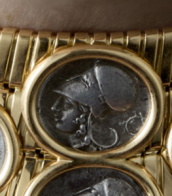
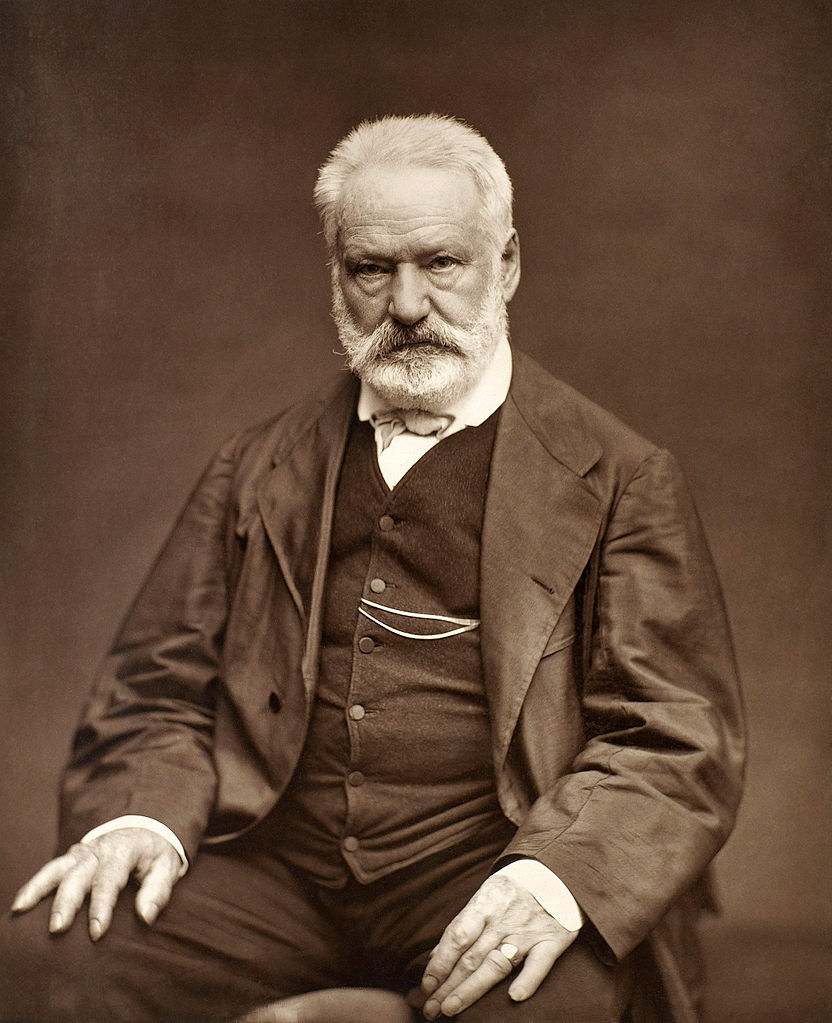
Victor Hugo was a French poet, novelist, dramatist, and politician, celebrated for his profound impact on art, culture, painting, and history. Born on February 26, 1802, in Besançon, France, Hugo emerged as a pivotal figure in the Romantic literary movement. His illustrious career spanned over six decades, during which he authored numerous works in various genres.
Victor Hugo's legacy is particularly notable for his novels "The Hunchback of Notre-Dame" (1831) and "Les Misérables" (1862), which have left an indelible mark on literature and culture. These works not only showcase his storytelling prowess but also reflect his deep engagement with the social issues of his time. His commitment to addressing societal concerns is further evidenced by his active political life and advocacy for causes like the abolition of capital punishment and slavery.
Beyond his literary and political contributions, Victor Hugo was also an accomplished artist, having produced over 4,000 drawings throughout his lifetime. His passion for the arts and dedication to social causes cemented his status as a national hero in France. When he passed away on May 22, 1885, his significance was underscored by a state funeral at the Panthéon in Paris, attended by over 2 million people, making it the largest in French history.
For collectors and experts in art and antiques, Victor Hugo's multifaceted legacy offers a rich tapestry of creativity and commitment to explore. His works not only provide profound literary enjoyment but also serve as a window into the cultural and historical milieu of 19th-century France.
To stay informed about new product sales and auction events related to Victor Hugo, sign up for updates. This subscription will ensure you're always in the loop regarding the latest developments related to this iconic figure's works and associated artifacts.
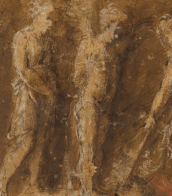

Victor Hugo was a French poet, novelist, dramatist, and politician, celebrated for his profound impact on art, culture, painting, and history. Born on February 26, 1802, in Besançon, France, Hugo emerged as a pivotal figure in the Romantic literary movement. His illustrious career spanned over six decades, during which he authored numerous works in various genres.
Victor Hugo's legacy is particularly notable for his novels "The Hunchback of Notre-Dame" (1831) and "Les Misérables" (1862), which have left an indelible mark on literature and culture. These works not only showcase his storytelling prowess but also reflect his deep engagement with the social issues of his time. His commitment to addressing societal concerns is further evidenced by his active political life and advocacy for causes like the abolition of capital punishment and slavery.
Beyond his literary and political contributions, Victor Hugo was also an accomplished artist, having produced over 4,000 drawings throughout his lifetime. His passion for the arts and dedication to social causes cemented his status as a national hero in France. When he passed away on May 22, 1885, his significance was underscored by a state funeral at the Panthéon in Paris, attended by over 2 million people, making it the largest in French history.
For collectors and experts in art and antiques, Victor Hugo's multifaceted legacy offers a rich tapestry of creativity and commitment to explore. His works not only provide profound literary enjoyment but also serve as a window into the cultural and historical milieu of 19th-century France.
To stay informed about new product sales and auction events related to Victor Hugo, sign up for updates. This subscription will ensure you're always in the loop regarding the latest developments related to this iconic figure's works and associated artifacts.


Joan Miró, a celebrated Spanish artist, was a master in painting, sculpture, and ceramics, renowned for his unique style that blurred the lines between Surrealism, Fauvism, and Expressionism. Born in Barcelona to a family of a goldsmith and a watchmaker, Miró grew up immersed in the rich cultural heritage of the Barri Gòtic neighborhood. His artistic journey began with drawing classes at the age of seven and continued at the prestigious La Llotja art academy. Despite an initial venture into the business world, Miró's passion for art prevailed, leading him to abandon his clerical career after a nervous breakdown.
Miró's work is noted for its exploration of the subconscious, often depicting a childlike perspective. This approach was both a critique of traditional painting methods and a means of expressing Catalan pride. His art, challenging to categorize, often featured symbolic elements and nationalistic qualities. One of his notable early works, "The Farm," reflects a transition to a more individual style, blending elements of his Catalan roots with broader artistic influences. This piece, later purchased by Ernest Hemingway, encapsulated the essence of Spain in its imagery.
In Paris, Miró joined the Surrealist movement in 1924, where his work began to reflect the influence of automatism, emphasizing spontaneous, automatic, or subconscious creation. He experimented with various mediums, including painting-poetry and collage, and even ventured into set and costume design for Sergei Diaghilev's Ballets Russes.
During World War II, Miró remained in Spain, and his work from this period, including the 22 Constellations series, reflected an interest in the night, music, and stars. His forms became increasingly abstracted, and he experimented with various techniques, often incorporating primary colors and evocative titles.
Miró's career spanned several decades, during which he continually evolved his style and explored new mediums. His contributions to art were recognized with numerous awards and retrospectives, including a major career retrospective at MoMA in 1941 and the Spanish Gold Medal for Fine Arts in 1980. Among his last major works was a tapestry for the World Trade Center in New York City, created in 1974.
For art collectors and enthusiasts, Joan Miró remains a figure of immense interest, not only for his distinct style and contributions to Surrealism but also for his ability to blend poetic imagery with political commentary. To stay updated on new product sales and auction events related to Joan Miró, sign up for our updates and immerse yourself in the world of this extraordinary artist.

